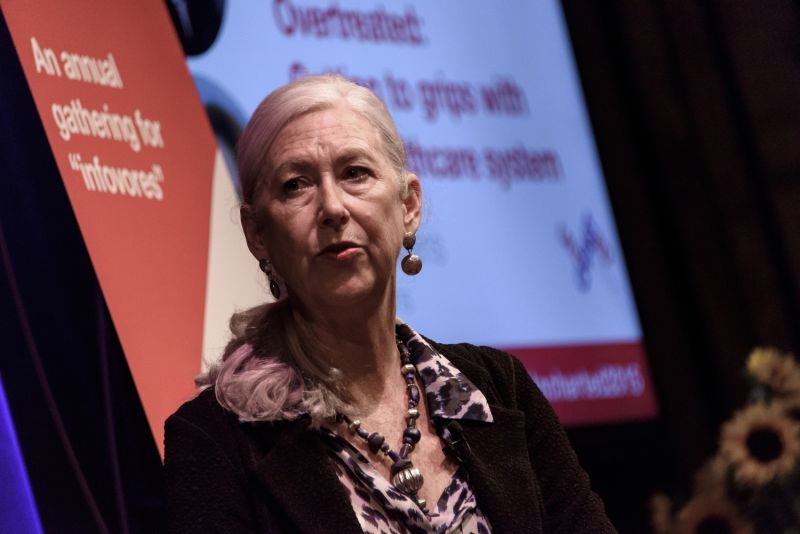But the man could not be dissuaded. He had the surgery and contracted an infection -- with C-difficile, an antibiotic-resistant bacteria that's very difficult to treat. It left him with chronic diarrhea.
"He died six months later," Brownlee said, "in a nursing home, having uncontrolled diarrhea for the last six months of his life, in despair."
It's tempting to think of these stories as isolated incidents, but they're disturbingly common. Analyses show about one-third of everything we do in medicine is unnecessary. It happens across the system -- in hospitals, nursing homes, in all specialties of care.
"Overuse is pervasive," Brownlee says, "it's in the air we breathe."
Brownlee said multiple forces contribute to overuse, but most of the ones that spring promptly to mind are not the big drivers. Doctors often point to "defensive medicine" -- that they do more to leave no stone unturned to avoid a potential lawsuit -- or they say that it is patients who demand to do everything possible.
Brownlee says these are certainly factors, but they're small. The big driver is money. "We treat health care like a business," Brownlee says. "We don't treat it like a public good." The payment system -- fee-for-service medicine -- has always favored doing more, as opposed to doing things that might make the patient better.
And while medicine is based in science, that does not mean that everything your doctor recommends is based on scientific evidence. "About 50 percent of what physicians do is backed up by valid evidence," Brownlee says. "I think about that in the context of airplane safety: the pilot comes out from the cockpit and says, 'I don't know what half of these dials do, but I think I can fly the plane anyway.' "
By this point I was flooded with questions from the audience -- sent up to me on index cards -- and plenty of people wanted to know how they were supposed to determine which half of the treatments their doctors recommended were actually backed up by evidence. After all, your doctor is the one who went to medical school. Most patients have not.
But even if you have no medical background, you "can be informed, as most patients can, of what the tradeoffs are of different treatment choices," Brownlee said. She pointed to an approach called shared decision making, a collaborative process between doctors and patients where they weigh together both the scientific evidence -- and a patients' values and preferences.
The easiest place to think of weighing evidence and values is in end-of-life care. But it applies in many areas of medicine from cancer screening to knee surgery to gall bladder surgery and more, Brownlee says.
There are online tools and other decision aids where patients can review their choices and "understand ... what the tradeoffs are, what the potential benefits are, what the potential harms are," Brownlee says, and then have a detailed conversation with their doctors about a treatment path.
The shared decision making approach is something patients themselves can start demanding, but fundamentally, Brownlee says, we need a different payment model. Right now, overall, the more doctors or hospitals do, the more they get paid. Hospitals "don't know how to care for a population of patients within a budget," she says.
The U.S. national health care spend is an almost-impossible-to-imagine $3 trillion, more than $9,200 per person, and, again, half of that is not backed up by evidence.
"By wasting money, resources and time on care people don't need," Brownlee says, "we are robbing many, many Americans of care they really do need."
